We wrapped up two batches of the Young Birders’ Workshop (YBW) 2025 last weekend, and what a wonderful journey it has been!
This year’s workshop brought together children from across the country, each carrying their own stories and regional birding experiences. The participants already had a spark – nurtured by attentive guardians and supportive local birding communities.
This workshop was undeniably enriched by the presence of children from across the country – from Gujarat to Arunachal Pradesh, from Delhi to Tamil Nadu. That diversity brought new birds and new ways of seeing the natural world into our virtual classroom. The participants not only learned a lot from each other, but also easily found a sense of belonging among peers who share their love for birds and the wild. We kicked off the workshop with a light-hearted activity: choosing “birdy names” for ourselves. These names reflected personal traits, passions, or hometown roots. The ‘Spectacled Singer’, ‘Tree Climbing Mango-Eater ‘, ‘Red crowned Skater’, ‘Black haired Puzzler’, ‘Southern Red Painter’ and more – these imaginative names were a delightful ice-breaker.
Theme I: Nature Journaling
Each participant brought a natural object—a leaf, a feather, a shell—and we explored it deeply through drawing, describing, and questioning.
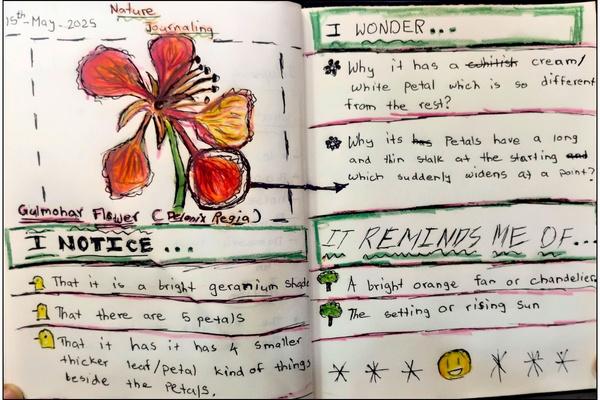
But our classes soon overflowed with more than leaves and feathers—live snails, centipedes, moths, and even an ailing pigeon made appearances. These moments weren’t just show-and-tell—they were eager invitations from the children to witness their discoveries and the natural world they were beginning to observe, question, and care about.
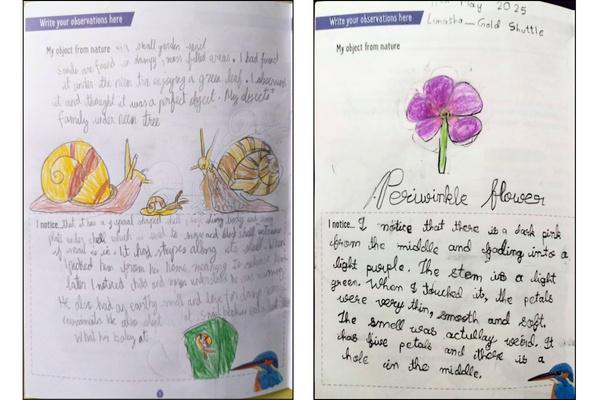
Their questions pushed us to learn more: Why do some leaves have holes? Why does only one petal of a Gulmohar tree flower have a different colour? How tall can trees grow? How do Starfish eat? Do crabs outgrow their shells? How is sand formed?
Theme II: Habitat
After discussing different ecosystems and adaptations, we gave them a creative challenge: create your own bird. From the Thunder Flame Falcon, which thrives near volcanoes, to an Aquatic Snake-eater, participants created fascinating birds and gave each bird a name, a home, a diet, and even special superpowers – like immunity to fire and the ability to breathe underwater.
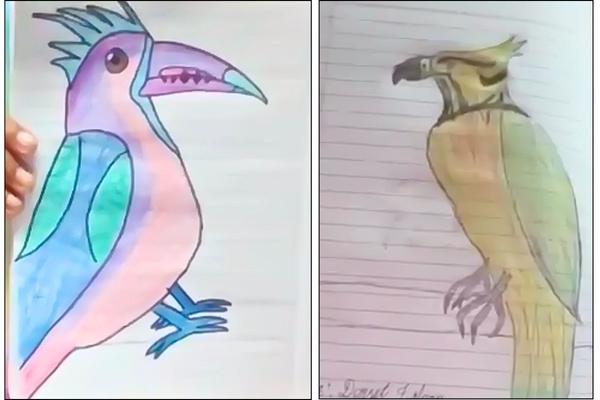
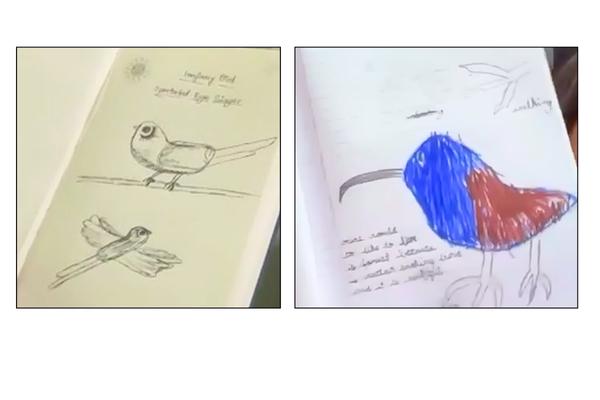
Then the participants examined different habitats – forests, cliffs, lakes, grasslands, and deserts, and discussed whether their birds would like to live in those habitats. They seemed attached to their creations, and their love for birds shined through. This playful session transitioned into a deeper discussion on real-world habitat needs and how birds adapt to live in different environments.
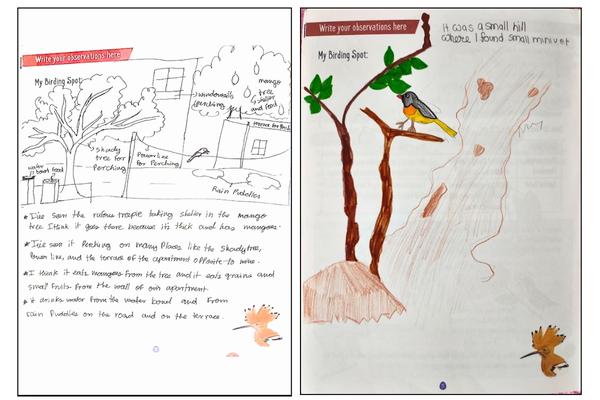
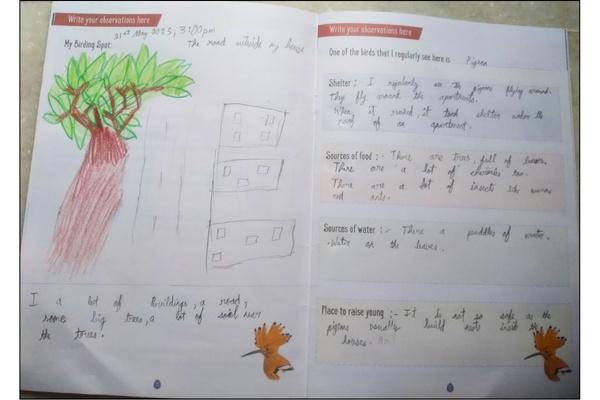
Theme III: Understanding Bird Behaviour
We explored several interesting behaviours – preening, gular fluttering, dabbling, mobbing, dust-bathing, etc. – through videos. Every video led to many questions – Why don’t all waterbirds have waterproof feathers? Why do some birds stand on one leg? Why are some kingfishers found even in places where there is no waterbody?
The students shared observations about bird behaviour that no field guide could teach. They spoke of bird pairs nesting near their homes year after year, describing nest materials, incubation times, and fledging. One of the participants, Malolan, shared plenty of details about a shikra he observes from his terrace—its hunting habits and how crows mob it to protect their chicks. He could also tell male, female, and juvenile shikras apart by the colour of their eyes.
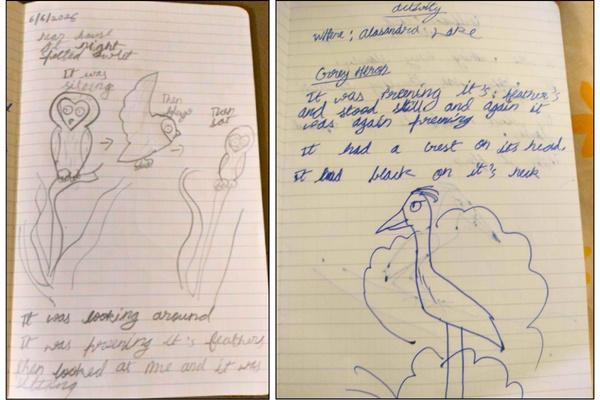
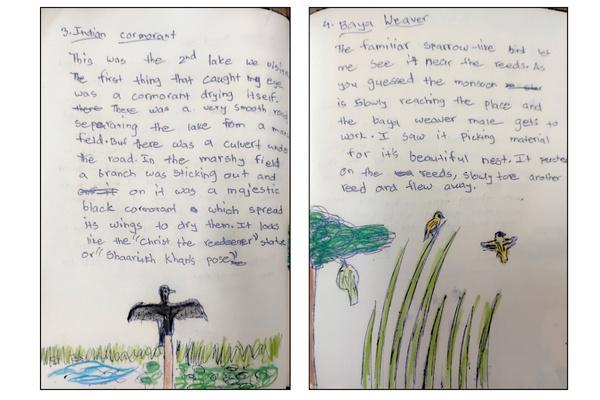
We also introduced the class to bird vocalisations—alarm calls, begging calls and mating songs. Using a series of polls and audio clips of different bird sounds, we explored how to describe sounds and built a shared vocabulary that will help them describe bird sounds in their future field notes. The participants also impressed us with excellent imitations of calls of common birds like the Asian Koel, Indian Peafowl and Shikra.
We later got to know from multiple parents that their children have started listening to birds even when they couldn’t see them, and tried to figure out which bird was calling. I believe that once you start noticing bird songs, it’s a habit that stays with you. I am hopeful that these sounds become little moments of everyday joy for our young birders.
Theme IV: The Life Cycle of a Bird
From egg laying to fledging, from migration to establishing territories, we reflected on the many challenges birds face throughout their lives. The class was alive with questions and empathy for the vulnerable stages of a bird’s life.
Throughout the workshop – we wove in games, quizzes, and polls to keep the energy high. In addition, the kids excitedly brought innumerable stories and observations. Many parents shared how their children’s attention spans, which usually wander during online sessions, were sustained and even heightened during YBW classes. They were amazed at how intently their children sat in one place and listened—not just to us as instructors, but to their peers as well.
Concluding Party
We planned the final session with lots of bird-themed games. But once again, the participants stole the show. They had created their own quizzes and games, and soon we abandoned our planned games entirely to play theirs. We ended with warm thank-you speeches and many requests to meet again.
One participant left us a message which I will always cherish –
“I am very lucky to join this course and super lucky to have teachers like you guys. I am very happy. I feel like I am with the right people to be with. Where I belong. Thank you so muuuch!!!!”
Until We Meet Again…
To all the young birders of YBW 2025: thank you. You reminded us why we do this work. You gave us hope for a future filled with more wonder and more love for the natural world.
And to the parents who supported their children on this journey – thank you. It was heartening to see so many adults nurturing their children’s interest in birds and in many cases, learning from their children.
I am already feeling the tug of anticipation for the next workshop, just like many of the kids who are eager to return – even if it means doing the same course again!
We hope to see many of you again — perhaps on a future bird walk or another edition of this course. Until then, keep exploring and happy birding!
Read about previous Young Birders’ workshops here: Reflections from Young Birders’ Workshop 2024, Our First Ever Young Birders’ Workshop

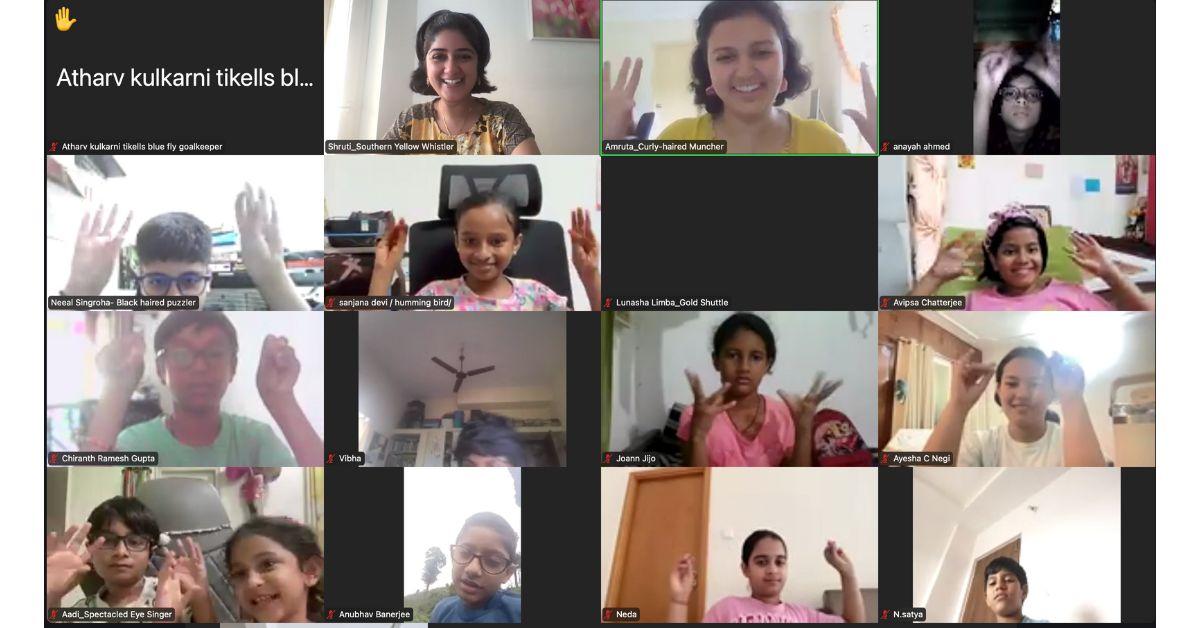
ammmmaaazing drawings, even more ammmaaazing deep thought and articulation, very sensitive and empathetic too…